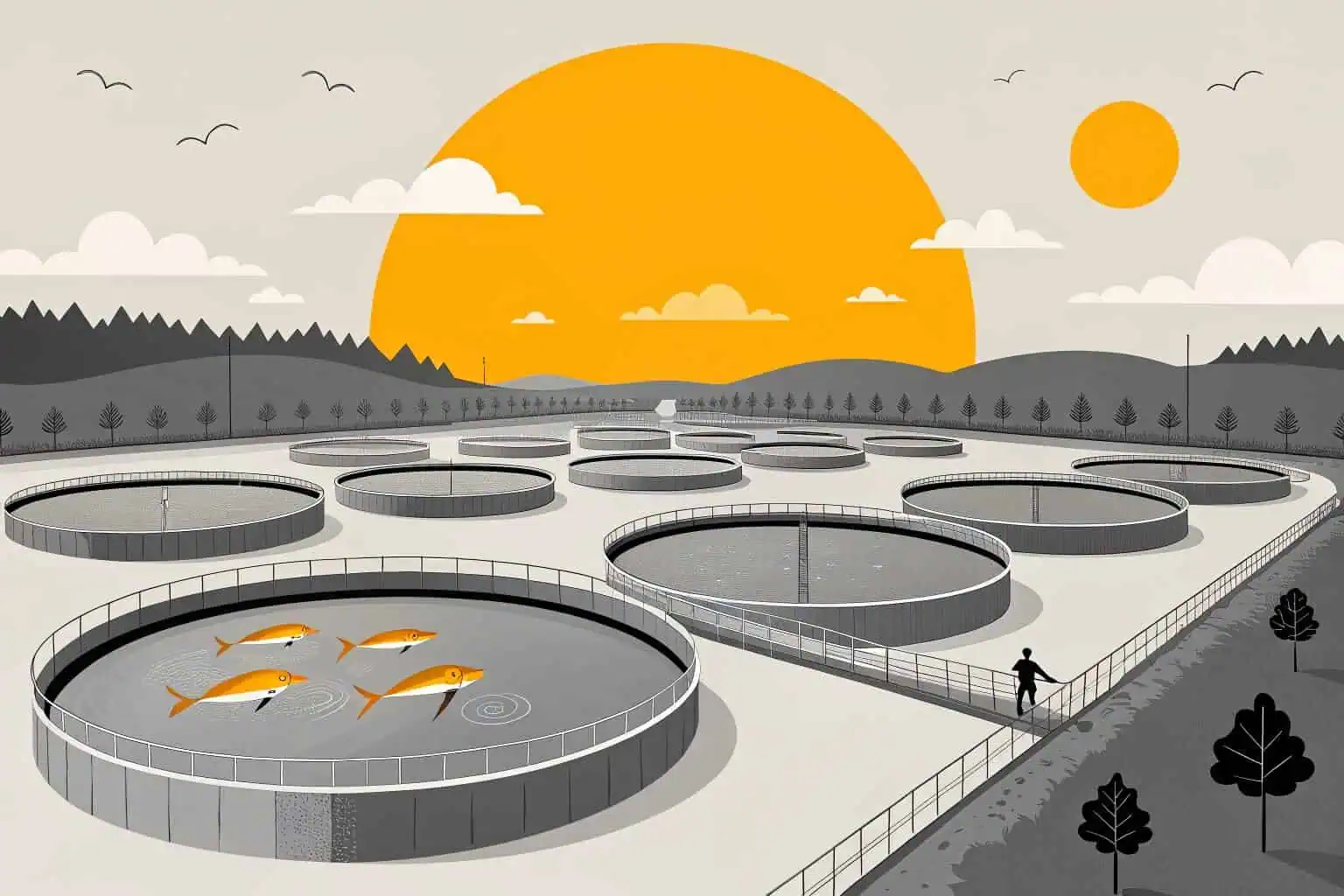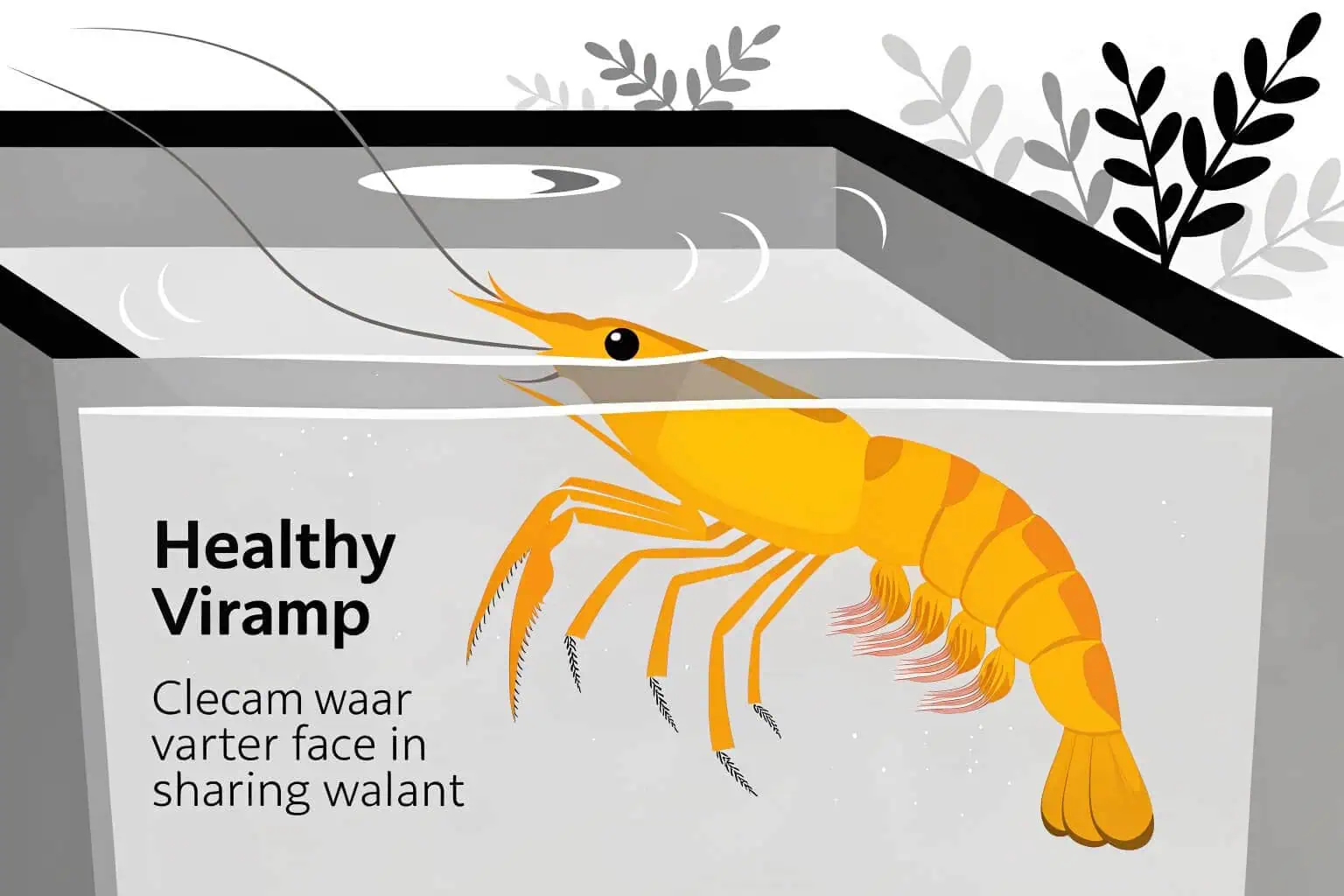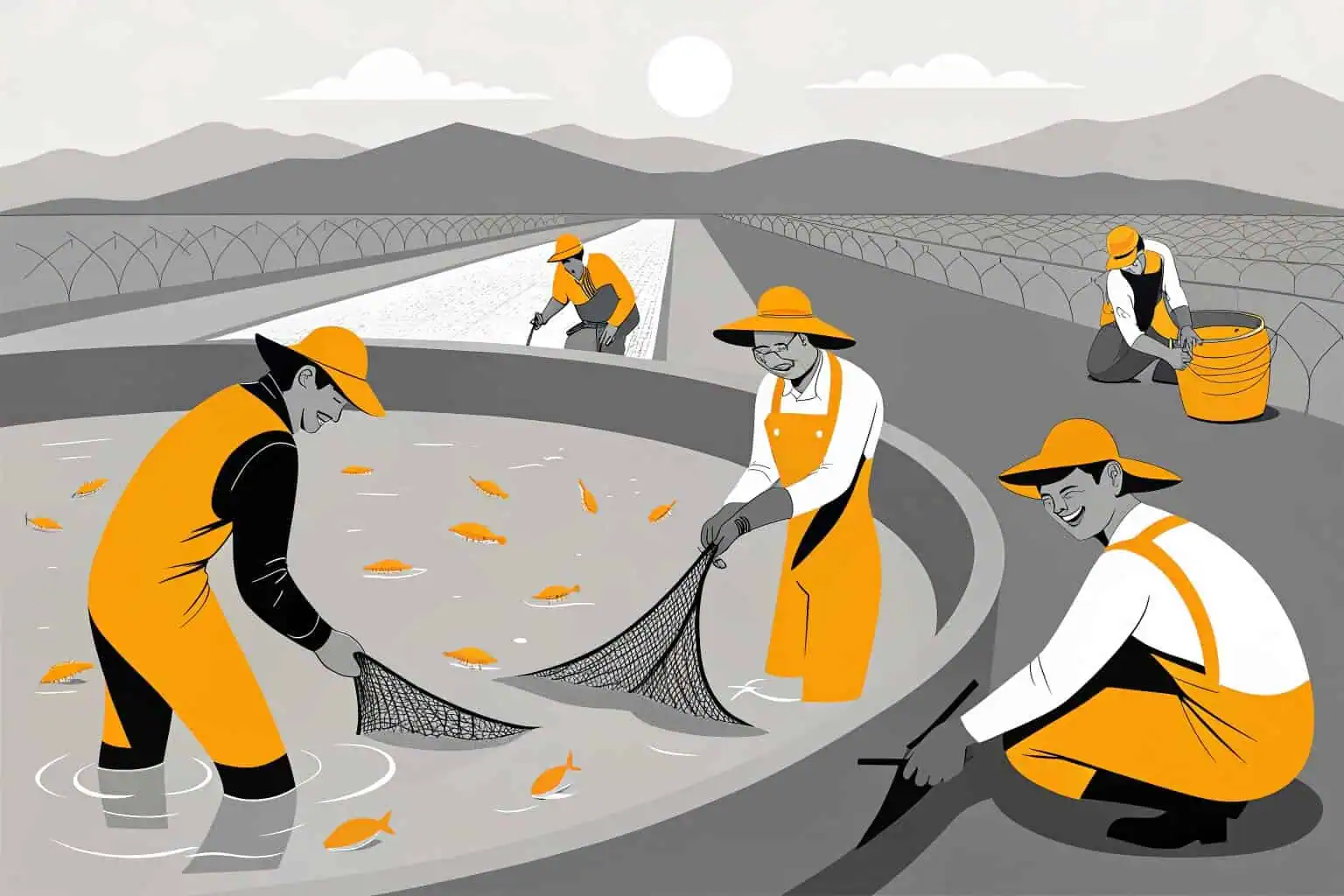Is aquaculture a profitable business?
Are you searching for a business that can bring real profits? Aquaculture looks like a great opportunity, but the risks can be scary. Let me show you how to make fish farming a successful and profitable business.
Yes, aquaculture is a very profitable business. If you choose high-demand species like shrimp or tilapia, you can get a return of 50-133% on your investment in just a few months. This is possible with efficient farming systems and good cost management.

You can see the chance for high returns, but you also know there are risks. In this business, you can make a lot of money, but you can also lose a lot. So, how do you handle this complex industry to make sure you succeed? Let's look at the details together.
What is the most profitable aquaculture?
Are you wondering which fish to farm for the best profit? If you choose the wrong species, you could lose money. I will show you which ones are in high demand and give you the best returns.
High-value species like shrimp, tilapia, and catfish are usually the most profitable. They have strong global demand and can give you a return on investment between 50% and 133% in just four to six months.

Based on my experience, it is very important to focus on species that already have a big market. I have seen many farms succeed by raising shrimp1 because restaurants and supermarkets always want to buy them. Tilapia is another great choice because it grows quickly and is very strong, which means less risk for you. Catfish is popular in many places, especially in Africa and the US, and you can raise a lot of them in a small area. Your choice will depend on your local market and climate, but these three are always good options. For example, I helped a small farm switch from a local, slow-growing fish to tilapia2. Their profits tripled in the first year. It is all about matching the right fish to the right market.
Why High-Value Species Drive Profitability
High-value species are in demand all year round. This means you can always sell your product at a good price. People are willing to pay more for shrimp and certain types of fish, which increases your profit margin3. These species also tend to have well-established supply chains, making it easier for you to get your product to buyers.
Comparing Popular Aquaculture Species
To help you decide, let's compare some of the most popular species.
| Species | Average ROI4 | Growth Cycle | Market Demand5 |
|---|---|---|---|
| Shrimp | 70-130% | 3-6 months | Very High |
| Tilapia | 50-100% | 6-9 months | High |
| Catfish | 60-120% | 4-6 months | High |
As you can see, each species has its own advantages. Your final decision should be based on careful research of your specific situation.
Is there money in aquaculture?
Are you wondering if you can really make a living from fish farming? Many people have tried and failed. I will share with you how it is possible to build a stable income and even create jobs for others.
Yes, there is a lot of money in aquaculture if you manage it well. Small farms can produce hundreds of tons of fish each year, which provides a steady income. The industry also creates many jobs, with an expected 22 million new jobs by 2050.

I have seen with my own eyes how a well-run aquaculture business6 can change a local economy. It is not just about the money the farm owner makes. One farm I worked with started with only a few ponds. Now, it employs more than 20 people from the local village. They produce hundreds of tons of catfish every year. This has a big impact on the community. The farm buys feed from local suppliers, uses local trucks for transport, and the employees spend their money in local shops. The world needs more seafood, and wild fish are becoming harder to find. Aquaculture fills this gap, creating a huge economic opportunity. The 22 million new jobs expected by 2050 are not just a number. They represent real families and communities getting a chance for a better life.
From Small Farm to Big Business
Many successful aquaculture businesses7 start small. With good management and a solid business plan, you can grow your farm over time. Reinvesting your profits into better equipment and more ponds can help you scale up your production and increase your income.
The Economic Impact on Communities
Aquaculture8 does more than just create jobs on the farm. It supports a wide range of other businesses, from feed producers to processing plants. This creates a strong local economy and improves the quality of life for everyone in the community.
| Economic Sector | Impact of Aquaculture Farm |
|---|---|
| Direct Employment | Jobs for farmworkers, managers, and technicians. |
| Indirect Employment9 | Jobs in feed production, equipment supply, and transportation. |
| Induced Employment | Jobs in local retail and services due to increased spending. |
| Local Businesses | Increased demand for local goods and services. |
What is a downside to being an aquaculturist?
Are you worried about the hidden costs and risks of fish farming? If you ignore them, it can lead to disaster. I will explain the main challenges so you can be prepared and avoid expensive mistakes.
The biggest downsides are high startup costs, environmental risks, and the danger of disease. Feed and equipment can take up more than 60% of your budget. Poor management can cause water pollution, lead to fines, and kill all your fish.

The truth is, aquaculture is not always easy. I have seen good farms fail because they did not prepare for the challenges. The biggest problem is often the money you need to start. You need land, ponds, good quality fish, and the cost of feed and equipment is very high, often more than 60% of your total costs. Then there are the risks of running the farm10. A disease can kill all your fish in just a few days. I remember one farmer who lost everything because of a bacteria that spread quickly in his crowded ponds. You also have to follow environmental rules. If your farm pollutes the local water, you could get big fines. This is a business that needs you to be careful and always ready to manage risks.
The Burden of High Startup Costs
The initial investment11 can be a major barrier for new farmers. It is important to have a detailed budget and secure enough funding before you start. Look for ways to reduce costs without sacrificing quality, such as buying used equipment or starting with a smaller operation.
To protect your investment, you need a solid plan to manage risks.
| Risk | Mitigation Strategy |
|---|---|
| High Feed Cost | Optimize feeding schedules and explore alternative, cheaper protein sources.12 |
| Disease Outbreak | Maintain good water quality, avoid overcrowding, and use biosecurity measures.13 |
| Water Pollution | Implement a waste management system and follow all environmental regulations. |
Being proactive about these risks is the best way to ensure the long-term success of your farm.
Is aquaculture a good investment?
Are you thinking about investing in aquaculture? It is a growing industry, but is it a safe choice? I will explain why it can be a smart investment if you do it the right way.
Yes, aquaculture is a great investment, especially if you use modern technology and sustainable methods. It helps meet the growing demand for protein and reduces the pressure on wild fish, offering both financial and environmental benefits for the long term.

Even with the risks, I truly believe that aquaculture is one of the best investment opportunities available today. The key is to be smart about it. I am a big supporter of using technology. Automated systems can check water quality all day and night, and zero-waste systems can turn fish waste into useful fertilizer. These new ideas reduce risk and make your farm more efficient. Also, sustainability is not just a popular word; it is a core part of a good business strategy. More and more customers want to buy seafood that is farmed in a responsible way. Farms that do not use antibiotics and use sustainable feed14 can often sell their products for a higher price. In places like Africa and Asia, aquaculture is not just an investment. It is a way to provide food security and help the economy grow. By investing in strong equipment and sustainable methods, you are not just building a business; you are helping to create a better future.
The Role of Technology and Innovation
Technology can help you overcome many of the challenges in aquaculture. From automated feeders15 to data analysis software16, these tools can help you run your farm more efficiently and profitably. Staying up-to-date with the latest innovations is key to staying competitive.
Sustainability as a Business Strategy
A commitment to sustainability17 can give you a significant advantage in the market. It can improve your brand reputation18, attract environmentally conscious customers, and even open up new markets for your products. It is a win-win for your business and the planet.
| Sustainable Practice | Benefit for Business | Benefit for Planet |
|---|---|---|
| Use of Recycled Materials19 | Lower equipment costs and stronger brand image. | Reduces waste and conserves natural resources. |
| Water Recirculation (RAS)20 | Reduces water usage and lowers operational costs. | Minimizes water pollution and protects local ecosystems. |
| Sustainable Feed Sources | Attracts premium customers and ensures long-term supply. | Reduces pressure on wild fish stocks. |
| Waste-to-Value Systems | Creates new revenue streams from waste products. | Reduces landfill waste and creates a circular economy. |
Conclusion
Aquaculture has great potential for profit, but it also comes with big risks. Success depends on choosing the right species, careful financial planning, and a strong commitment to sustainable and innovative farming.
-
Explore this link to understand the profitability of shrimp farming and how it meets market demand. ↩
-
Discover the advantages of tilapia farming, including growth rates and market potential.--- ↩
-
Exploring strategies to increase profit margins can lead to better financial outcomes in your seafood ventures. ↩
-
Understanding the average ROI can help you make informed investment decisions in aquaculture. ↩
-
Exploring market demand will guide you in selecting species that are profitable and in high demand. ↩
-
Explore this resource to learn how aquaculture businesses can thrive and positively impact local economies. ↩
-
Explore this link to learn proven strategies and tips for launching and growing a successful aquaculture enterprise. ↩
-
Explore this link to understand how aquaculture boosts local economies and creates diverse employment opportunities. ↩
-
Learn how aquaculture supports jobs in related industries like feed production and transportation, strengthening community businesses. ↩
-
Discover essential risk management techniques to protect your aquaculture investment and ensure sustainability. ↩
-
Understanding how to secure initial investment can help new farmers overcome financial barriers and start their operations successfully. ↩
-
Discover proven methods to reduce feed costs and improve efficiency in animal nutrition. ↩
-
Learn essential biosecurity practices to ensure healthy aquatic environments and prevent disease spread. ↩
-
Discover how sustainable feed options can enhance your farm's profitability while supporting environmental responsibility. ↩
-
Explore this link to understand how automated feeders can improve efficiency and reduce labor costs in aquaculture. ↩
-
Learn how data analysis software can optimize farm operations and increase profitability in aquaculture. ↩
-
Explore this resource to learn effective strategies for integrating sustainability into your business operations, enhancing your market position. ↩
-
Discover how sustainability initiatives can boost your brand reputation and attract more environmentally conscious customers. ↩
-
Explore how recycled materials can lower costs and enhance your brand image while benefiting the environment. ↩
-
Learn how water recirculation systems reduce water usage, lower costs, and protect ecosystems. ↩